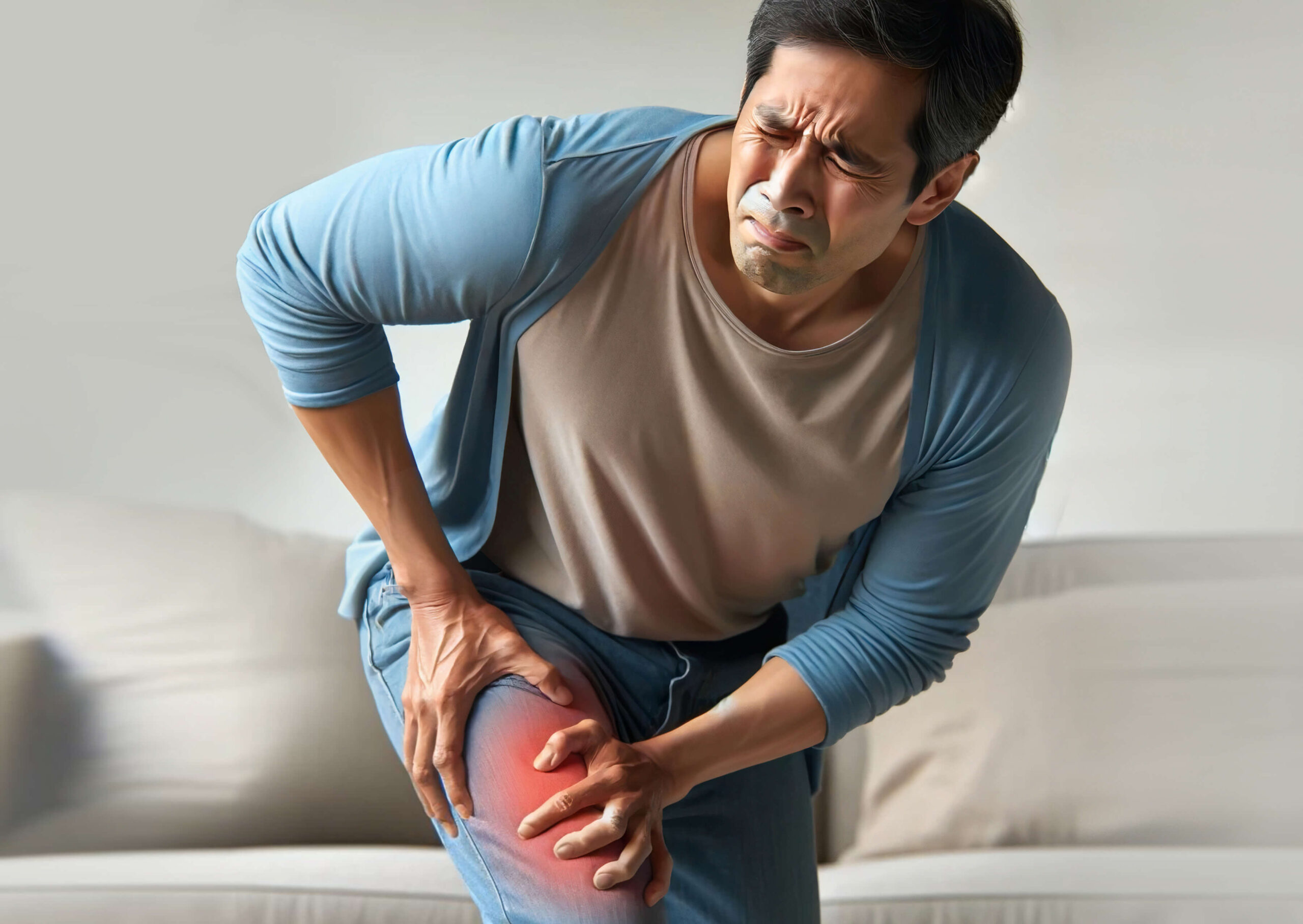Schedule An Appointment With Us
Are Your Symptoms Affecting Your Quality Of Life?
Consult our MOH-accredited hip osteoarthritis specialist for a comprehensive diagnosis of your condition & a personalised treatment plan.
Hip osteoarthritis primarily results in pain and stiffness in the hip, posing challenges in performing normal activities. Hip osteoarthritis can have a large impact on daily life, as it hinders basic movements and activities.
MBBS
MRCSEd
MMED (Ortho)
FRCSEd

Hip osteoarthritis is a degenerative joint disease, commonly affecting individuals as they age. While osteoarthritis can manifest in any joint, it frequently occurs in weight-bearing joints, notably the hip. In a healthy hip, the articular cartilage, a smooth and slippery tissue, ensures effortless movement by covering and protecting the bones constituting the hip joint. In osteoarthritis, this cartilage deteriorates, leading to direct bone-on-bone contact. This friction prompts the bones to form outward spurs, which are often painful.
Hip osteoarthritis does not have a singular cause. Certain factors can increase the likelihood of developing the condition, but it does not guarantee its onset.
Hip osteoarthritis can have several characteristic symptoms:
Diagnosing hip osteoarthritis involves a comprehensive approach, typically involving the following steps:
In the early stages of hip osteoarthritis, non-surgical treatments are often effective in managing symptoms.
Lifestyle Modifications |
In the early stages of hip osteoarthritis, hip specialists may recommend adjusting daily activities to minimise strain on the hip joint. This includes weight management to reduce the load on weight-bearing joints and modifying activities that exacerbate their condition, like certain sports or heavy lifting. |
Using Assistive Devices to Improve Mobility |
Hip specialists also suggest utilising canes or other walking aids to improve mobility and independence, reducing stress on the hip joint. |
Pain Management |
Some hip specialists may prescribe medications and hip injections to relieve pain and reduce inflammation in the joint. |
In cases where non-surgical treatments fail to provide relief and osteoarthritis leads to disability, surgery may be considered.
This is the most common surgical procedure for severe hip osteoarthritis. It involves removing the damaged acetabulum and femoral head and replacing them with artificial joint surfaces. This surgery aims to restore hip function and alleviate pain.
Recent improvements have enhanced the longevity and effectiveness of hip replacements. Improved surgical techniques have led to more accurate positioning of hip components, and enhanced bearing surfaces have improved the stability of the hip joint and reduced wear rates of the implants.
While it may not be possible to completely prevent hip osteoarthritis, certain strategies can lower the risk and delay its onset.
Schedule An Appointment With Us
Consult our MOH-accredited hip osteoarthritis specialist for a comprehensive diagnosis of your condition & a personalised treatment plan.

MBBS
MRCSEd
MMED (Ortho)
FRCSEd
With over 18 years of experience, Dr Poh Seng Yew is an orthopaedic surgeon specialising in hip, knee, shoulder and elbow surgery, sports medicine, and trauma surgery.




Weekdays: 9.00am – 5.00pm
Saturdays: 9.00am – 1.00pm
Sundays and Public Holidays: Closed
Your symptoms shouldn’t affect your quality of life or disrupt daily activities. Reach out to our friendly clinic staff today & schedule a consultation.
With hip osteoarthritis, try to avoid activities that exacerbate pain and stiffness. High-impact exercises and heavy lifting should be minimised as they can increase joint stress. Consulting with our hip specialist can help provide tailored guidance on safe activities and exercises.
If left untreated, hip osteoarthritis may progressively worsen, leading to increased pain, stiffness, and reduced mobility. Early intervention by a hip specialist can help manage symptoms effectively and prevent the condition from adversely impacting your daily life. Contact us today for a tailored treatment plan.
For better sleep with hip osteoarthritis, use a supportive mattress and consider sleeping on your back or the unaffected side with a pillow between your knees. This can help align the hips and reduce discomfort. Our hip specialist can provide additional personalised guidance for improved sleep comfort.
Hip osteoarthritis typically develops gradually, but some individuals might experience a sudden onset of symptoms. Sudden or severe symptoms warrant a consultation with a hip specialist for proper diagnosis and management.
A healthy diet can play a supportive role in managing hip osteoarthritis. Foods rich in antioxidants and anti-inflammatory properties may help reduce joint inflammation and pain. A balanced diet can also aid in maintaining a healthy weight, thus reducing stress on the hip joints.